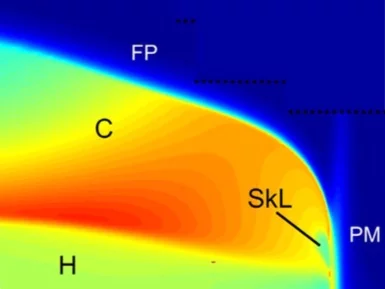The recent discovery of magnetic skyrmion lattices initiated a surge of interest in the scientic community. Several novel phenomena have been shown to emerge from the interaction of conducting electrons with the skyrmion lattice, such as a topological Hall-effect and a spin-transfer torque at ultra-low current densities. In the insulating compound Cu2OSeO3, magneto-electric coupling enables control of the skyrmion lattice via electric elds, promising a dissipation-less route towards novel spintronic devices. One of the outstanding fundamental issues is related to the thermodynamic stability of the skyrmion lattice. To date, the skyrmion lattice in bulk materials has been found only in a narrow temperature region just below the order-disorder transition. If this narrow stability is unavoidable, it would severely limit applications. Here we present the discovery that applying just moderate pressure on Cu2OSeO3 substantially increases the absolute size of the skyrmion pocket. This insight demonstrates directly that tuning the electronic structure can lead to a significant enhancement of the skyrmion lattice stability. We interpret the discovery by extending the previously employed Ginzburg- Landau approach and conclude that change in the anisotropy is the main driver for control of the size of the skyrmion pocket.
- About the CentercloseAbout the Center
- Our Research
- Our User Facilities
- SINQ: Swiss Spallation Neutron Source
- SμS: Swiss Muon Source
- CHRISP: Swiss Research Infrastructure for Particle Physics
- Scientific Advisory Committees
- Publications
- Jobs & Education


